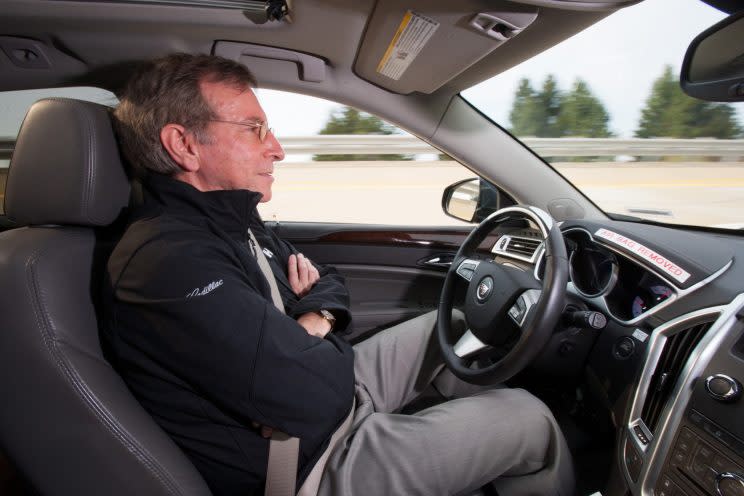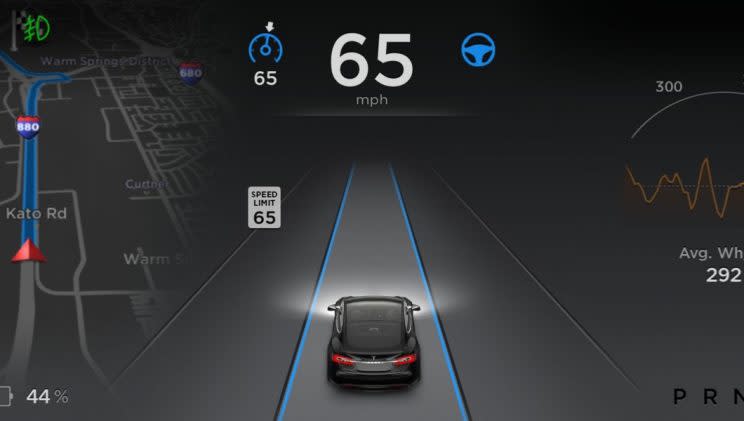These are the cars we'll get before self-driving cars

LISBON — Before autonomous cars can drive us everywhere, they’ll need the equivalent of a learner’s permit: limited self-driving modes that require the driver to keep both hands on the wheel.
Executives at Cadillac and Renault-Nissan sketched out this roadmap — a less ambitious but possibly more realistic strategy than Tesla’s aggressive rollout of its Autopilot feature — in speeches at the Web Summit conference here.
One lane at a time
In a talk Tuesday morning, Renault-Nissan CEO Carlos Ghosn touted the company’s progress but also warned of upcoming obstacles to self-driving cars.
The good news first: 60% of the buyers of the company’s first vehicle to offer an autonomous option, a Japanese-market minivan, pay the $1,000 and change to get the feature. However, that self-driving mode only works in a single lane of a highway. Nissan expects to add support for changing lanes by 2018, with city driving coming in 2020.
By then, Ghosn said, the company plans to have 10 autonomous models. But to make this “a technology that you can use everywhere and [is] flawless,” Renault-Nissan has work to do. One of the bigger challenges: dealing with the wide range of driver skills and behavior in, say, Tokyo versus Mumbai or Cairo.
“99% right is much easier than 100% right,” Ghosn said.
He asked governments to provide some sort of regulatory framework with room for self-driving technology — an effort that’s still in an early state at the US Department of Transportation. Car makers, in turn, need to get customers to trust the technology by answering their questions upfront.
Ghosn also spoke about Renault-Nissan’s electric-vehicle ambitions, which have benefited from increasingly cheaper batteries. The firm plans to sell an $8,000 electric car in China—“where the market is booming”—because its electric Leaf costs too much for many buyers there.
The car drives and watches you
Cadillac president Johan de Nysschen described a similar incremental approach, in an interview with Yahoo Finance on Tuesday and during a Web Summit talk on Wednesday,
“We see it as a gradual phased transition from scenario today to the ultimate scenario of full autonomous capability,” he said. The General Motors (GM) subsidiary will begin by adding a “Super Cruise” feature next year that will only drive the car on some roads and will actively monitor the driver’s attention — something de Nysschen called “supervised driving.”
First, Super Cruise will be geofenced to operate only on roads without oncoming traffic. Second, it will use multiple sensors to make sure your focus is on the road.

“It will have facial recognition systems, it will monitor eye movements, it will monitor whether the driver has his hands on the steering wheel,” he said. If the car thinks your attention has wandered, a red light will flash, the seat belt will vibrate and you’ll get a warning beep.
If you ignore those alerts for long enough, the car will eventually pull over and stop. And if you still don’t respond, it will use GM’s OnStar system to call for help. In that situation, de Nysschen said, “you have to assume that something has gone wrong.”
Supervised driving represents a major departure from Google’s approach to autonomous cars. After early tests revealed that even Google developers who promised to pay attention to test vehicles while they drove themselves started taking their hands off the wheel, the Alphabet, Inc., (GOOG) subsidiary decided it had to skip intermediate steps and make a car that not only operated autonomously but allowed for no human control.
“For us, it’s not about replacing the driver,” de Nysschen said. But not all driving is fun, so if it can automate those it will: “We also recognize that there are some aspects of driving that can be tedious.”
His other gripe with Google: the looks of its self-driving prototype, featuring obvious bumps and lumps to accommodate its various sensors: “Nobody wants to buy a car that looks like that.”
Societal rewards
Car manufacturers will benefit from driverless cars by charging us healthy prices for them, but it’s important to remember that we will benefit because too many of us don’t drive very well. One result: 35,902 US deaths from vehicle crashes in 2015
But autonomous cars also offer the promise of more efficient use of the highways with self-driving vehicles that can travel in formation. “You can pack cars far more densely,” de Nysschen said, adding that we might see autonomous-only lanes.
Autonomous cars will, however, be no more capable of perfect operation than any other software-controlled machine, and so both Ghosn and de Nysschen counseled accepting the inevitability of an autonomous car getting into a collision instead of freaking out over it.
Another Web Summit speaker, MIT scientist Andrew McAfee, made the same point, arguing that even if a self-driving car gets into a situation in which it can only avoid one person by running into another, it would still do better than we would today.
“You know how we handle those ethical considerations? We freak out and jerk the wheel,” he said in a panel Tuesday. “The idea that there’s any kind of considered response is kind of a joke.”
(Disclosure: I moderated four panels at the conference, in return for which the organizers are covering most of my travel costs.)
More from Rob:
Facebook’s status update: broadband bets, chattier bots, stricter security
Twitter keeps innovating, but isn’t fixing these core problems
How hackers could use your smart home devices to launch web attacks
How the government plans to make your self-driving car safer
Email Rob at rob@robpegoraro.com; follow him on Twitter at @robpegoraro.

